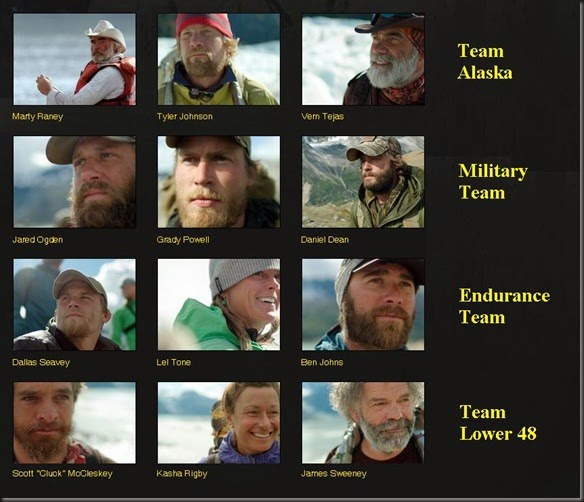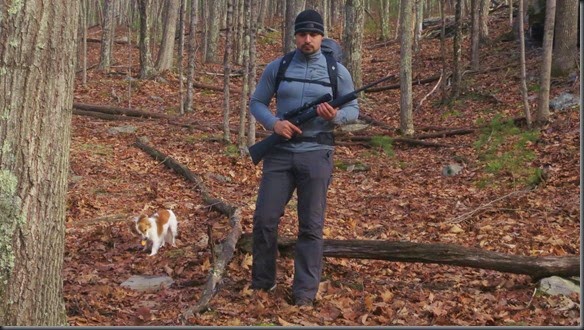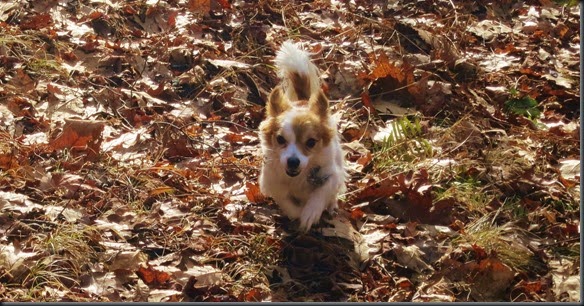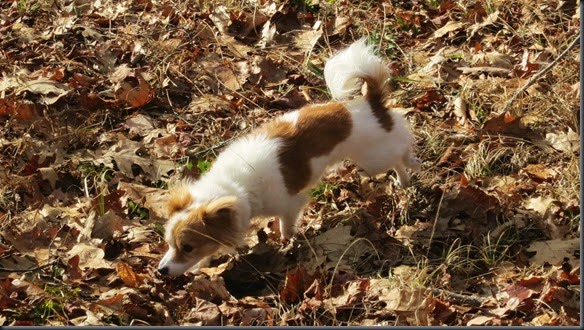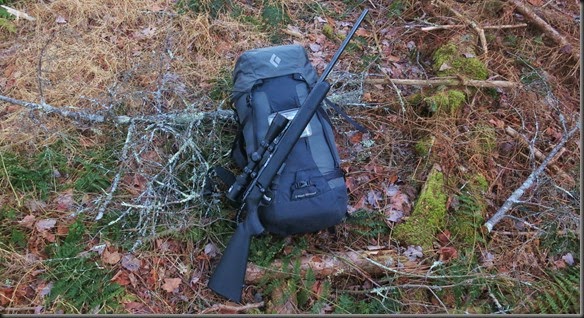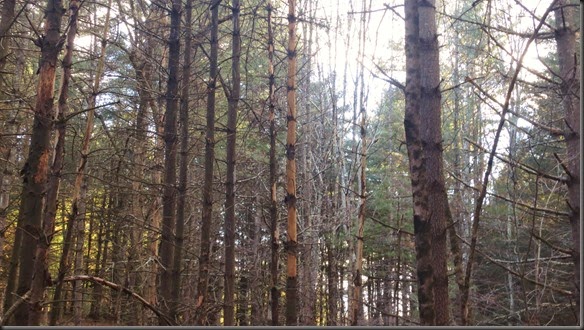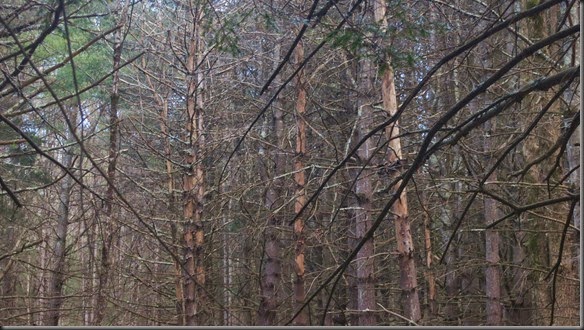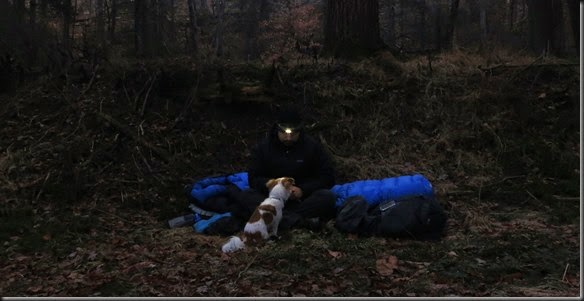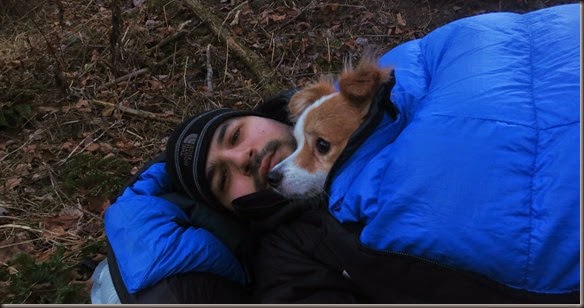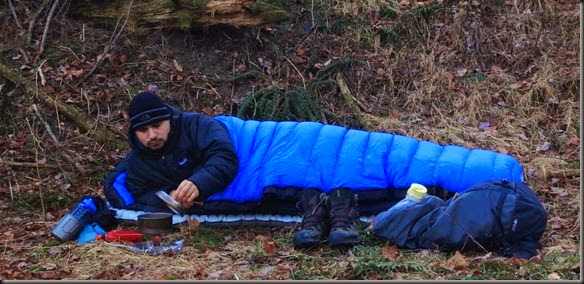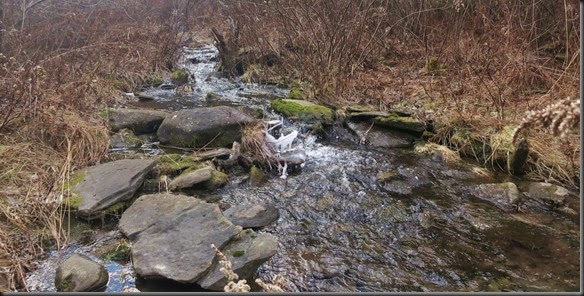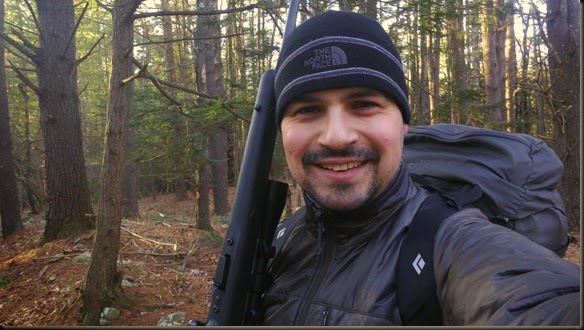Recently I have been reading a lot about cold weather stoves online. I like making things, and tinkering with my stoves and modifying them makes me extremely happy, so I’m constantly looking for ideas and techniques. What I found is that there is a lot of fighting over the issue of cold weather stoves, and the information on them is all over the place. It got me thinking about the issue, so I figured I would write this post based on my own experiences and testing, as well understanding of the issues which cause the conflicts.
I believe a lot of the debates occur because of lack of clarification over certain assumption which people are making. The issues I see most often are:
- What exactly do we mean by “cold weather”?
- Are we discussing the performance of a particular stove, or the stove system?
- What is the user willing to do in order to make the stove function?
- What do you expect the stove to actually do besides produce a flame?
What is cold weather?
A lot of the confusion over stoves for cold weather use comes from what the user actually considers to be “cold weather”. The average user tends to assume that if there is snow on the ground, we are talking about cold weather. So, if they see someone use the stove in the snow, then the conclusion is usually that this is a good cold weather stove. That of course is pretty far from the truth.
I am fortunate to be in a region where winter weather can fluctuate over a huge range of conditions. I can tell you, you can have temperatures of 10F (-12C) with absolutely no snow on the ground, and you can have temperatures of 35F (2C) with waist deep snow. Seeing a stove function in the snow does not automatically make it a good cold weather stove. Just about any stove will function at 32F (0C); –15F (-26C) is a different story.
Another thing we often see is people pulling a stove or a fuel canister out of the freezer and showing that it can still work. On the spectrum of cold weather camping, the freezer is actually a pretty warm environment. Most freezers maintain temperatures just below freezing (although some have commented that typical freezers run colder, so make sure to find the exact temperature; I’m no freezer expert). So, the freezer tests don’t really tell us all that much about how a stove will work in weather that is actually cold.
Are we discussing the performance of a particular stove, or the stove system?
I also see a lot of confusion and conflict because people discuss stove performance while in many cases referring to the stove system rather than the stove itself. The way a stove system utilizes the heat from the stove can make a drastic difference to the performance. One system may be much more efficient than another. That is valuable information when it comes to choosing a stove system, but it doesn’t necessarily tell us much about the stove itself.
For example, you can have two stoves that utilize an upright canister with isobutane as fuel at 20F (-7C). At that temperatures both stoves will be struggling. However, if one of the stoves uses a good integrated pot system that captures the heat better, it will boil much faster and more efficiently. The conclusion of that however is not necessarily that the stove itself somehow works better, or that it has altered the laws of physics. It is just a case of there being a better system in place to utilize the heat.
What is the user willing to do in order to make the stove function?
Yet another issue is what the user actually means when they say they use a particular stove in cold weather. Just about every stove has been used under just about any condition. However, what did the user have to do or put up with in order to use the stove, and are you willing to do the same thing. Are you willing to wait 20 minutes to boil two cups of water? Are you willing to stay up all night melting snow? Are you willing to swap out cartridges every 10 minutes and warm them up under your jacket? Are you willing to risk an Alpine Bomb configuration for your stove?
And not only are you willing to do those things, but do you actually have to. In that picture that you saw of a climber using an upright canister stove, did he actually have a different option, or was his “tent” hanging from bolts on the side of a wall and this stove was the only one he could safely use inside the shelter?
What do you expect the stove to actually do besides produce a flame?
Lastly, when you hear a person say that a stove works in cold weather, what exactly do they mean by that? A stove producing a flame might be sufficient for someone to say that it is working, but is that the definition you had in mind, or did you mean that the stove must perform a certain function that you need, i.e. melt snow, boil water, etc. If a stove produces a flame, but can not get water to boil, or takes 30 minutes to boil two cups of water, would you say this stove works in cold weather? Make sure your definition of “working” matches that of the person whose advise you are taking.
We see that a lot with alcohol stoves. Some people say they work in cold weather, others insist that they don’t. My experience is that just about all alcohol stoves will burn in cold weather. It is also my experience that you will need huge amounts of fuel and time to actually do anything with that stove other than watch it burn. What do you have in mind when you hear that a stove works in cold weather?
------------------------------------------------------------------------------------------------------------------------------------
So, all that being said, let me go over some of the more popular options and give you my $0.02 on stoves for cold weather use.
Alcohol Stoves
Most people these days accept that alcohol stoves are not well suited for cold weather use. That of course doesn’t mean that they can not be used at all under such conditions. Keeping the above questions in mind, an alcohol stove may very well be put to use in winter. Fridtjof Nansen used a specially made alcohol stove during his crossing of Greenland in 1888, so clearly it can work. For what it counts however, that is the last expedition on which he used an alcohol stove, as far as I know.
Like with a lot of other fuels, when burning alcohol, you are not burning the liquid directly, but rather the fumes from the fuel. Under warm weather conditions, alcohol readily releases fumes, which you can light. Once the stove is burning, the heat generated causes the rest of the alcohol to evaporate and burn. The colder the weather however, the less vapor is released by the fuel. As such, it becomes more and more difficult to light. Holding a flame however to the fuel for a few seconds will usually fix that. Once the initial fuel starts burning, the stove will heat up and cause the rest of the fuel to vaporize. So, in the sense that you can light a stove in cold weather, it is doable, especially if you keep the fuel and stove warmed up under your coat or in your sleeping bag. Again, it is an issue of what you are wiling to do.
The main problem with alcohol stoves is that while you can get them to burn, it is hard to get them to do much else. Keeping in mind the issues of stove systems and your expectations of what a stove should do, generally, alcohol stoves have a hard time producing enough heat to function well in cold weather. It is very possible that your stove will be burning at full blast and still fail to boil any water. Consequently, the amount of fuel required tends to be very large, an issue which increases exponentially when trying to melt snow for water.
Keep in mind that an efficient alcohol stove will boil two cups of water in warm weather in about 10 minutes. You have faster stoves, but they are not as frugal with fuel. Imagine that you now had to use that same stove to melt enough snow for two litters of water and then boil two cups at 10F (-12C). The amount of time and fuel required makes alcohol stoves impractical. If however, all you want is a stove that can warm up a cup of water for tea during a winter hike, then such a stove may very well be a good choice.
So, to put alcohol stoves within the context of the questions at the top of the post, an alcohol stove can make a suitable cold weather stove if your definition of cold weather is just below freezing, and you only intend to use the stove to heat up small quantities of water. A stove system which traps the heat well (pot and ground insulation, windscreen, preheating pan, etc) will increase the operational range of the stove, but you must still be willing to compromise and work within the limitations of the stove.
Upright Canister Mounted Stoves
Canister mounted stoves are also not very high on the cold weather stove list. The reason for that is a combination of the fuel they use and how they utilize the fuel. Most fuel canisters contain one or a mixture of several gases. The main ones are butane, isobutane, and propane. A canister mounted stove screws in to a valve on top of the fuel canister. Once the valve is opened, the gas is pushed up through the burner due to the internal pressure of the canister. That works well for moderate weather, but suffers a serious performance drop in cold weather.
The reason for the poor cold weather performance the that such stoves rely on the internal pressure of the canister, which in cold weather diminishes, and ultimately stops being enough to propel any fuel out of the canister. For there to be pressure in the canister, the fuel has to be able to gasify. The boiling points, the points at which each fuel becomes a gas are:
- Butane: 31F (-0.5C)
- Isobutane: 11F (-12C)
- Propane: –44F (-42C)
Below each of the above temperatures, the fuel remains liquid, and does not generate sufficient pressure. The question of course is, why not use pure propane. While there are propane cartridges, they seem to require very thick walls, which makes them unsuitable for backpacking purposes. Most manufacturers offer a “cold weather” fuel mix which typically contains about 70% isobutane and 30% propane. The main working component of such a fuel is the isobutane. In order for it to properly gasify, a minimum operating temperature for the stove (without using any tricks) is about 20F (-7C), roughly 10 degrees above the fuel’s boiling point. Keep in mind that a canister cools while fuel is being drawn from it because of the decreasing pressure. The propane within the mix helps the stove burn in colder temperatures, but if you consistently use the canister in temperatures too cold for the isobutane to come into play, you will quickly burn off the propane, and the stove will stop working.
There are three issues that I want to address in terms of canister mounted stoves, which I think cause a lot of confusion:
- “My stove worked fine for the first litter of water, but then if stopped working well.”
- “My stove has a pressure regulator, so it works in all temperatures.”
- “I saw a picture of this guy use the stove on Everest, so why can’t I?”
As to the first point, the issue is the one I mentioned in the above paragraph. The person making that statement is burning off the propane in the canister. Once the propane is used up (in reality some of the isobutane/butane mix is used as well, but no need to overcomplicate it), the stove has to rely on the isobutane/butane fuel, which then can not perform at the lower temperature.
The second point, regarding pressure regulators/controllers is slightly more complicated. In recent years several companies have come out with canister mounted stoves which have pressure regulators, and claim improved cold weather performance. Jetboil has one on the Sol (which I think they are phasing out), Soto has the OD-1R, and MSR has the Reactor. If you are to listen to sales reps, you would rightfully get the impression that these pressure regulators allow the stoves to work in any temperature. That couldn’t be further from the truth. All that the regulators do is they allow the stove to work at lower canister pressure. By doing that, they provide more consistent flame over the traditional operating range of the canister fuel, and may be able to go a few degrees lower than a conventional stove which requires a higher canister pressure. That however does not translate to cold weather performance.
This brings us back to your definition of “cold weather”. While manufacturers of stoves with pressure regulators talk about cold weather performance, you have to look closely at their data to see that they actually mean. For the Jetboil stoves with pressure regulators, the “cold weather” temperature range they are talking about is 20F (-7C) to 32F (0C); Soto talks about 15F (-9C) to 32F (0C), and MSR doesn’t give exact numbers, but specifies that the reactor is intended to be used for temperatures down to just below freezing. What does all this mean? Well, it means that the stove is not doing all that much beyond what an ordinary canister mounted stove would do. The boiling point of isobutane is 11F (-12C). All of the above stoves operate above that temperature. None of them can circumvent the issue of the gasification point of the canister fuel. Once the fuel stops gasifying, an upright canister stove will not work unless certain tricks are applied, regulator or not.
As to the last point, aside from the earlier consideration of you not knowing exactly what that person is willing to do to make the stove work, there is the additional issue of the fact that the boiling point of the gases will decrease as atmospheric pressure decreases. That means that at high elevation the canister fuel will be able to vaporize at a lower temperature. The fact that a butane canister may work at 20,000 feet does not mean it will work at sea level. Here is a chart showing the correlation for butane.
Chart courtesy of Adventures in Stoving.
Know your fuel, and know your conditions. Once the fuel stops vaporizing however, an upright canister mounted stove will not work without external help. This makes them less than idea for cold weather use.
So, once again, to put upright canister mounted stoves in the context of the four questions asked in the beginning of the post, if your definition of cold weather is above 20F (-7C) these stoves can be convenient and can work quite well. Having a well developed stove system will allow you to efficiently heat larger quantities of water and melt snow. The colder the temperature, the more you have to pay attention to keeping the fuel warm. Below 20F (-7C), these stoves can be made to work, but the swapping out of canisters during use, sleeping with the canister in your sleeping bag to keep it warm, and cooking in an enclosed space may be required.
Inverted Canister Stoves
Inverted canister stoves strive to solve the above issue of fuel vaporization. In my opinion they make for good cold weather stoves. They still have limitations, but can be successfully used in properly cold weather and have been, especially at altitude.
Inverted canister stoves still utilize the same pressurized fuel canisters discussed above, but they can utilize the fuel inside without the need for all of the gas to vaporize. Most such stoves have a canister that attaches remotely with the use of a hose line, but not necessarily, nor are all stoves with a remotely mounted canister suited for inverted canister use. For inverted canister use you need a stove with a vaporization tube. The tube takes the fuel from the fuel line, passes over the burner head, and then feeds the fuel to the burner. By taking the fuel over the burner, it can utilize liquid fuel, which then gasifies due to the heat from the burner, in effect eliminating the need for the canister to stay warm. As long as you haven’t used up the propane in the canister, there will be enough pressure to keep it working even at low temperatures.
Now obviously such a stove is not going to work at –60F (-51C), but for most cold weather, short of arctic exploration, it will work fine. Things like burner size, and the size of the vaporization tube will effect exactly how well the stove performs in cold weather, but the system itself makes for good cold weather use. The MSR Windpro II and the Kovea Spider are good examples of this system.
In the context of the four questions at the top of the post, Inverted canister stoves are a good choice if your idea of cold weather is above –20F (-29C). They will effectively heat up good quantities of water and melt snow. For melting snow, a system with a heat exchanger will provide increased efficiency and may be worth the added weight. These stoves are relatively easy to use and require little compromise as long as the temperatures are not too low.
Petrol/Liquid Fuel Stoves
The workhorse of cold weather stove systems is the white gas or petrol stove. Since the beginning of the 20th century, they have dominated cold weather exploration. Much like the inverted canister stoves above, petrol stoves use a vaporization tube to take a liquid petroleum based fuel, and vaporize it before reaching the burner. However, instead of using a pressurized canister, these stoves utilize a hand pump to pressurize the fuel bottle. This system allows for the stoves to be used in any temperature where a human being can survive.
The downside is that these stoves are not the lightest, and require some knowledge to operate. It’s not as easy as turning the knob and lighting it. For that reason many people avoid them at all costs. If you truly need cold weather performance however, a system based on a white gas stove is the way to go.
So, if your idea of cold weather is below –20F (-29C) a liquid fuel stove is the way to go. They produce large amounts of heat and are excellent for heating up large quantities of water and melting snow. A heat exchanger is a good idea since it will these stoves produce a lot of heat which may otherwise be lost with a regular pot.
Summary
It has been hard to put together a coherent summary for all of the above, but here it goes:
If your idea of “cold weather” use for a stove is temperatures just below freezing, down to about 20F (-7C), then alcohol stoves and upright canister mounted stoves will fit the role. While alcohol stoves will work at those temperatures, they will struggle to heat up large quantities of water or melt snow. Canister mounted stoves on the other hand, assuming you use a cold weather fuel, will do a good job at heating up large quantities of water as well as melting snow. Stove systems like the MSR Reactor extend the abilities of such stoves, making them excellent at heating up water and melting snow, and doing it consistently across the operational range of the stove. That being said, a stove system will not extend the operational range of the basic stove past what is possible for the fuel.
If your idea of “cold weather” requires a stove that can reliably function below 20F (-7C), then an inverted canister stove may be right for you, assuming you do not want to go much below –20F (-29C). By inverting the standard fuel canister, these stoves can use the fuel in its liquid form, significantly extending the operational range of the stove. These stoves are very good at heating up water and melting snow. A pot with a heat exchanger and a good windscreen will increase the performance.
If your idea of “cold weather” dips below –20F (-29C), then a liquid fuel stove is your best bet. They have been used in just about any temperature, and function reliably if very cold weather. As with the other stoves, a stove system designed to effectively capture the heat will increase performance. White gas/petrol stoves can put out a lot of heat, and without a good system to capture it, a lot of heat can be lost.
The above guidelines are just that, guidelines. They are my estimates for the temperatures in which I would feel conformable using the stoves without having to do any tricks. That being said, I’ve used just about all of the stove systems in temperatures for which they are not recommended, and others have pushed their stoves even further. That however enters into the realm of “What are you willing to do in order to keep your stove working?” I’ve recommended a bottom operating temperature for an upright canister stove of 20F (-7C). I, along with many others have used these stoves in much colder weather. If however, running a flat piece of copper pipe from the burner to the bottom of the canister, or swapping out canisters while using the stove in your tent is not your idea of proper stove use, then the above guidelines are a good rule of thumb to follow.
Also, as mentioned above, using a good stove system can significantly add to the stove’s performance. How well your stove system works, how much more efficiency it provides, and whether the additional weight of the system is worth it, is a question you have to answer for yourself.
Anyway, these are just my thoughts on stoves for cold weather use. I’m not a huge stove guy, but when I’m out in the woods, I do need stoves that will get the job done. The above is based on my experience with the different stove types. Just a few examples:
- I’ve used a Brasslite Turbo ID stove in 25F (-4C) weather. I had to spend a ridiculous amount of time just to boil water. I’ve also had several situations where even in warmer temperatures I couldn’t get water to boil at all because I had forgotten the windscreen.
- I’ve used a MSR Reactor at 10F (-12C). It didn’t work particularly well. I had to use two canisters. I would keep one warm in my jacket and use the other one. After about 10 minutes I would have to change out the canister and use the warm one while putting the other one in my jacket. It’s not a fun thing to do with a frozen canister.
- I’ve successfully used a Kovea Spider with inverted canister at –15F (-26C). I had some flare-ups, but it got the job done without much hassle. It definitely needed a windscreen. I imagine that a stove with a larger vaporization tube like the MSR Windpro II would be better in colder weather.
- I’ve been using liquid fuel stoves for a long time. I’ve had a bunch of them and I really like them. Once you are used to them, they aren’t particularly difficult to use and definitely get the job done.
If you have a more than casual interest in backpacking stoves, be sure to check out Adventures in Stoving for much, much more information. There you can find much more in-depth info on everything from cold weather use of canister stoves to stove fuel efficiency.
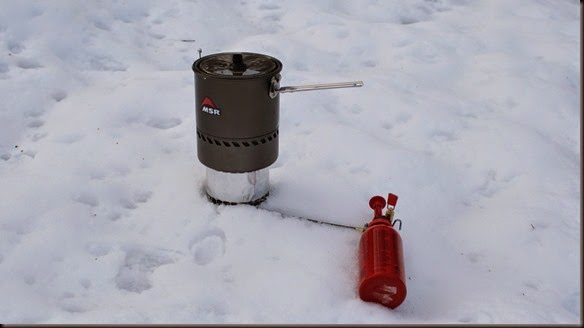

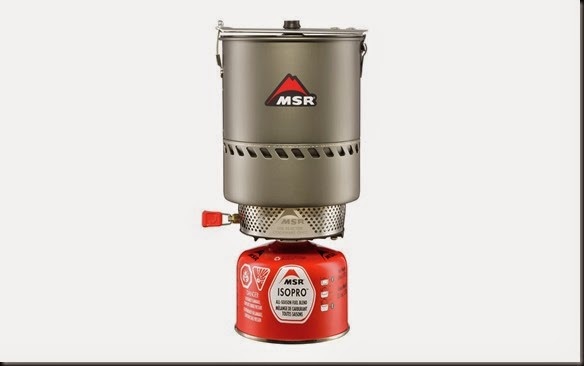
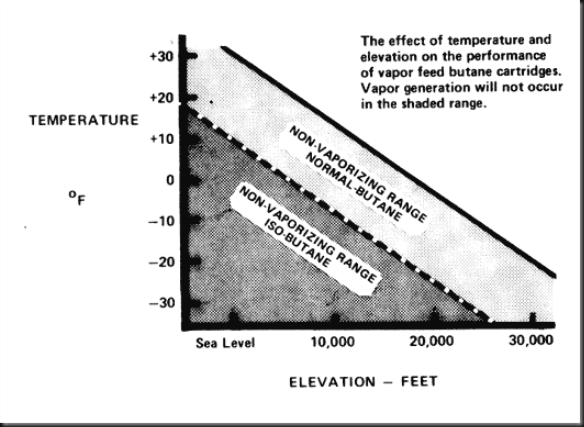

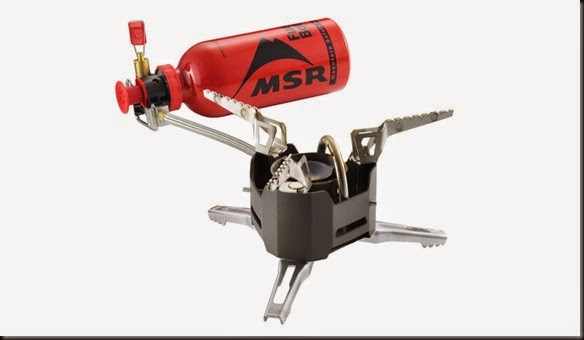
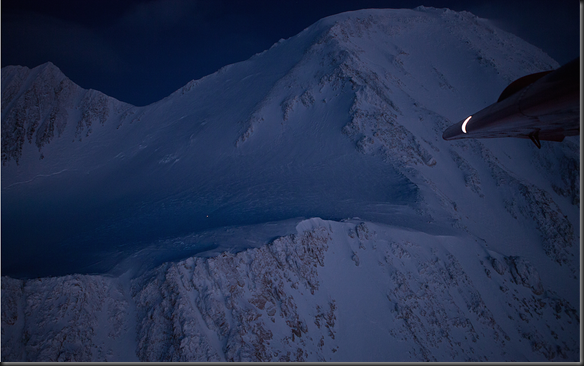
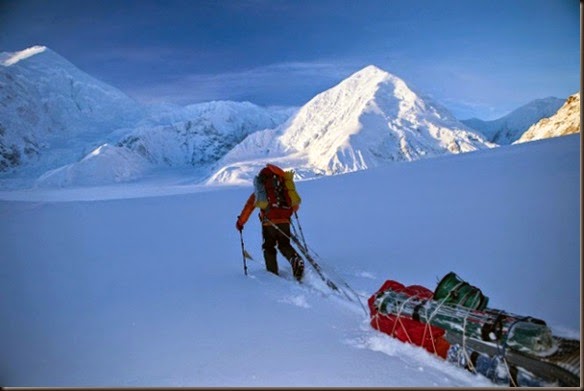
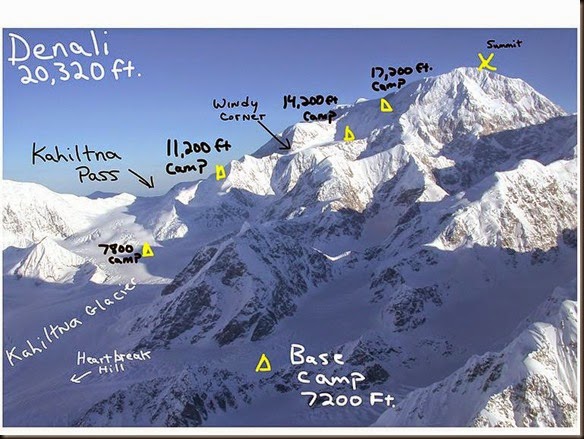
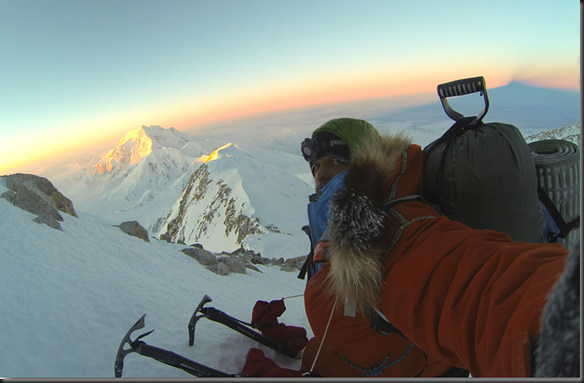
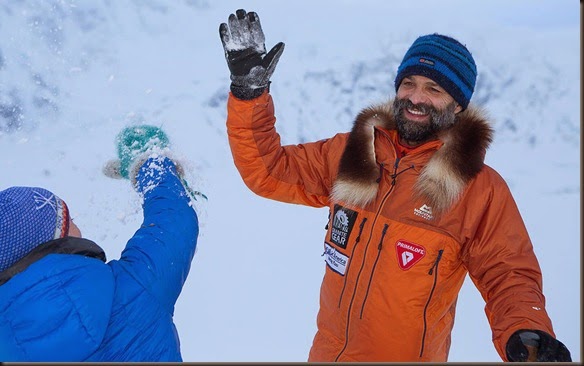
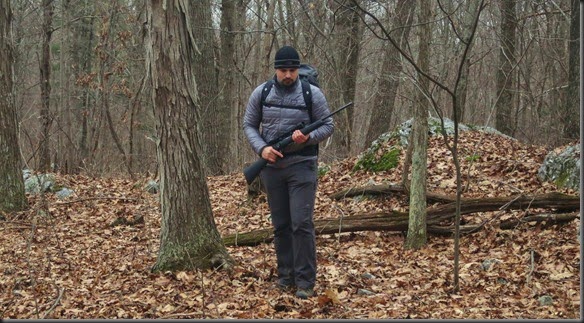

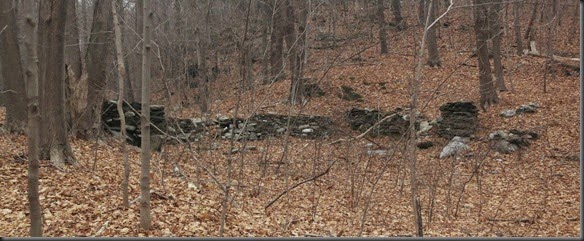
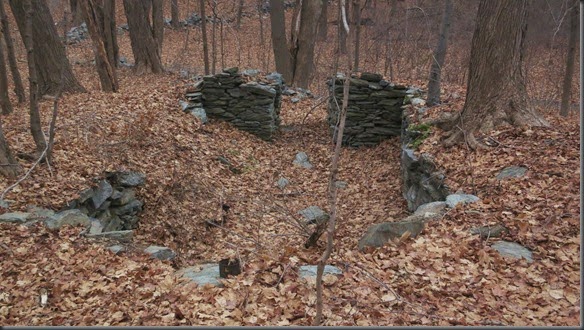
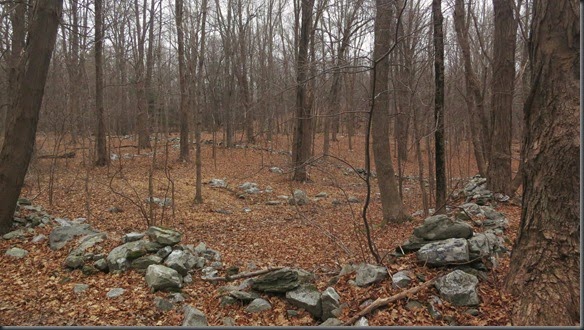
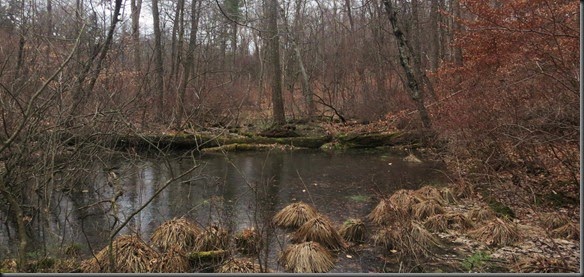
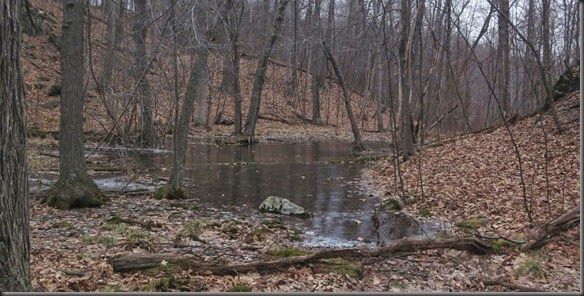
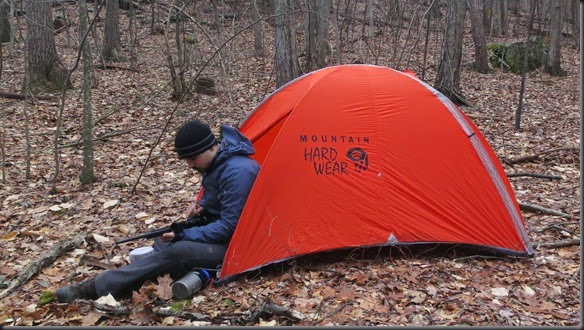

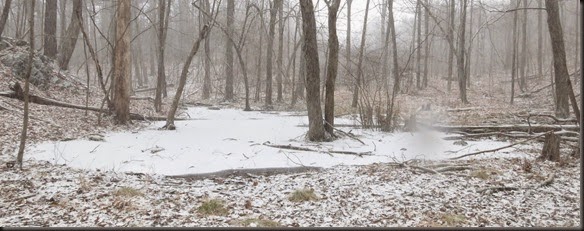
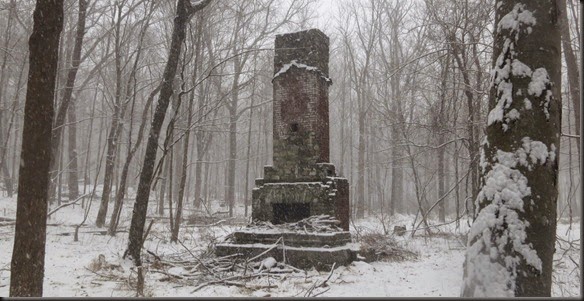
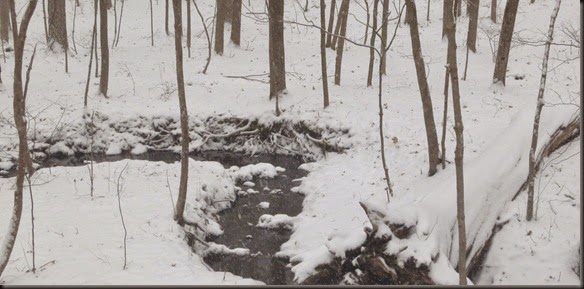

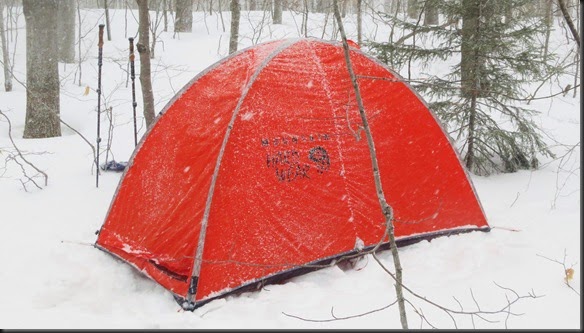
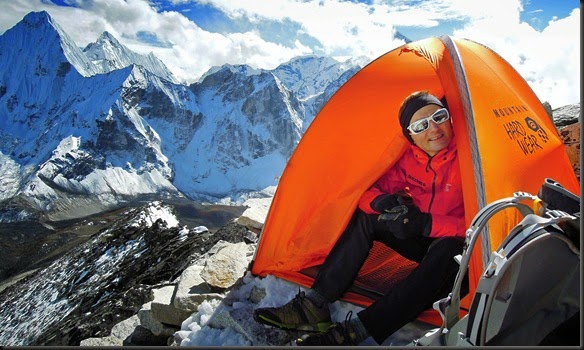

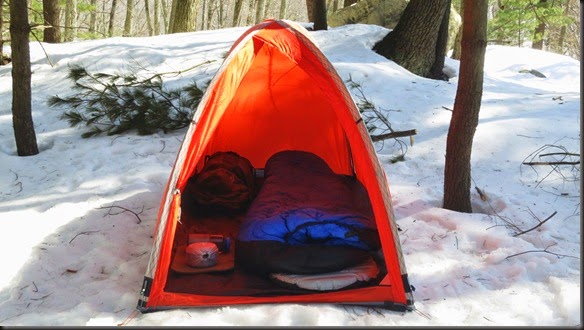
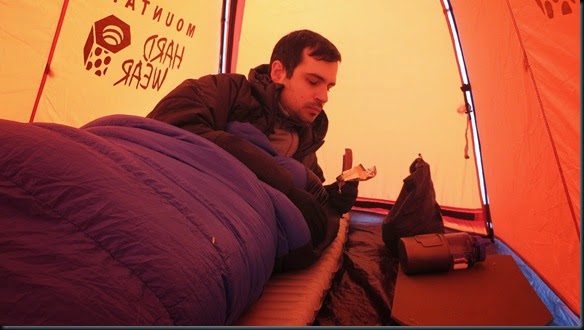
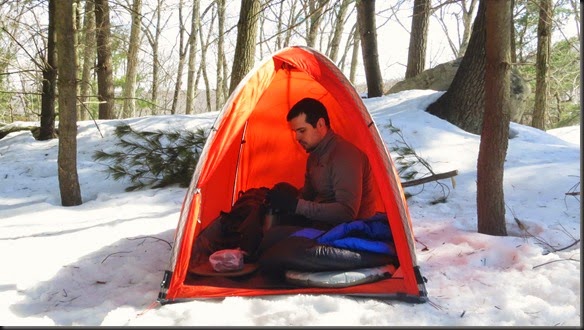
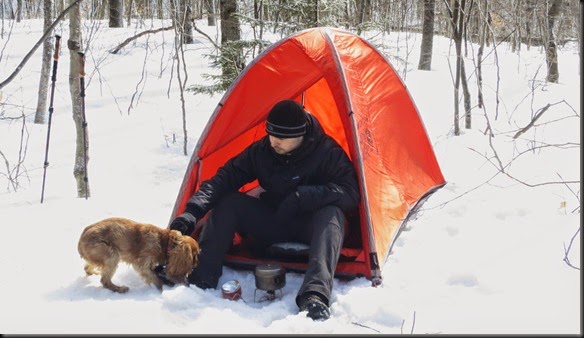
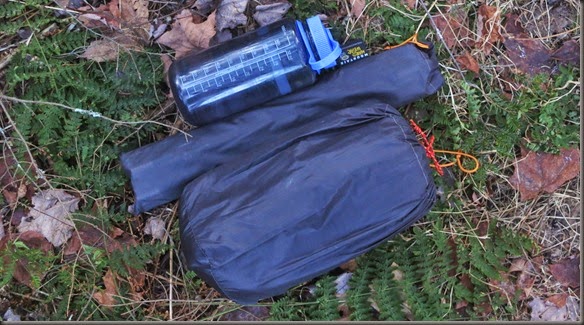
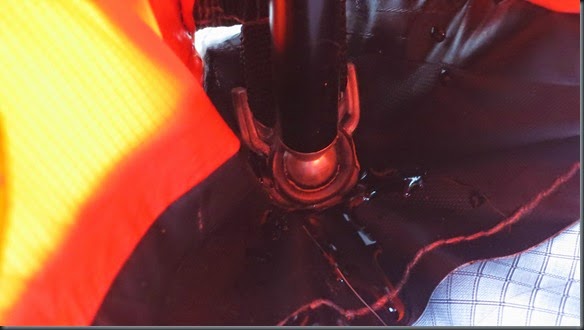
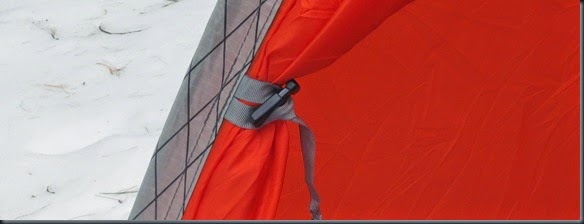
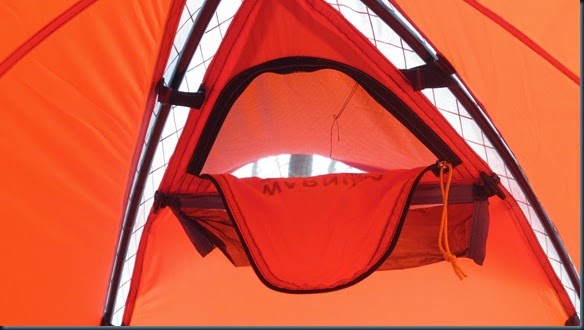
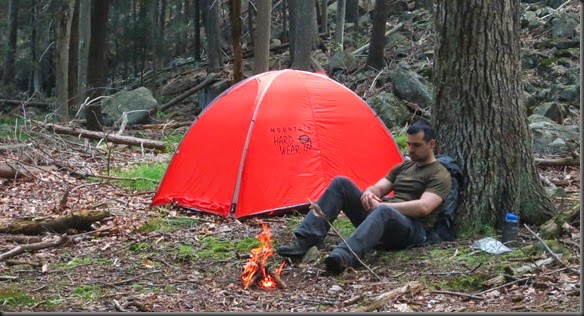
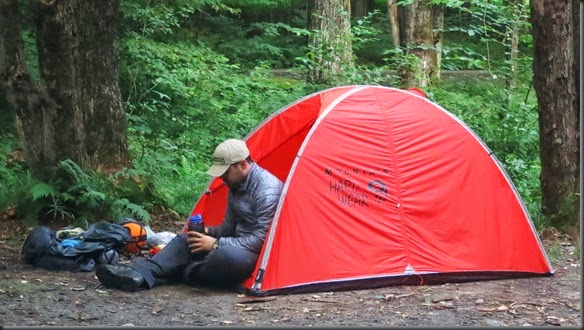
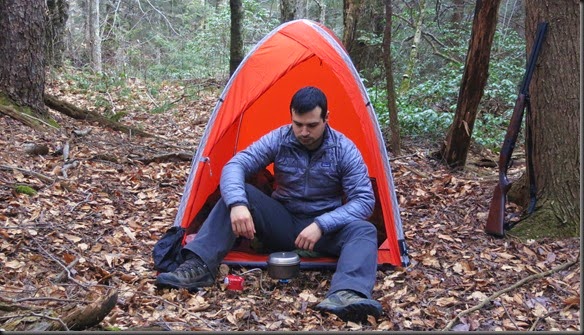
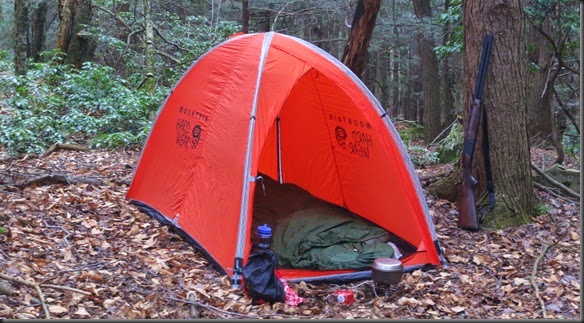
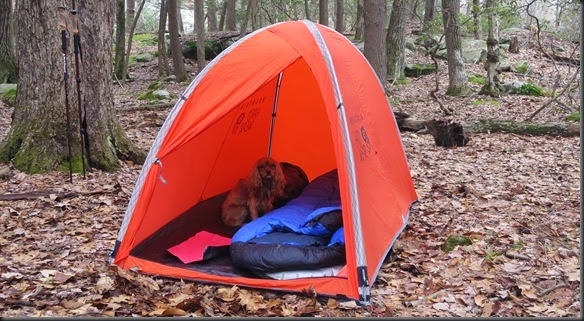

![IMG_0969[3] IMG_0969[3]](http://lh4.ggpht.com/-d3BodBIgDLA/VK_Q99OpNMI/AAAAAAAAOzg/wbCJRJEx2Tw/IMG_09693_thumb1.jpg?imgmax=800)


